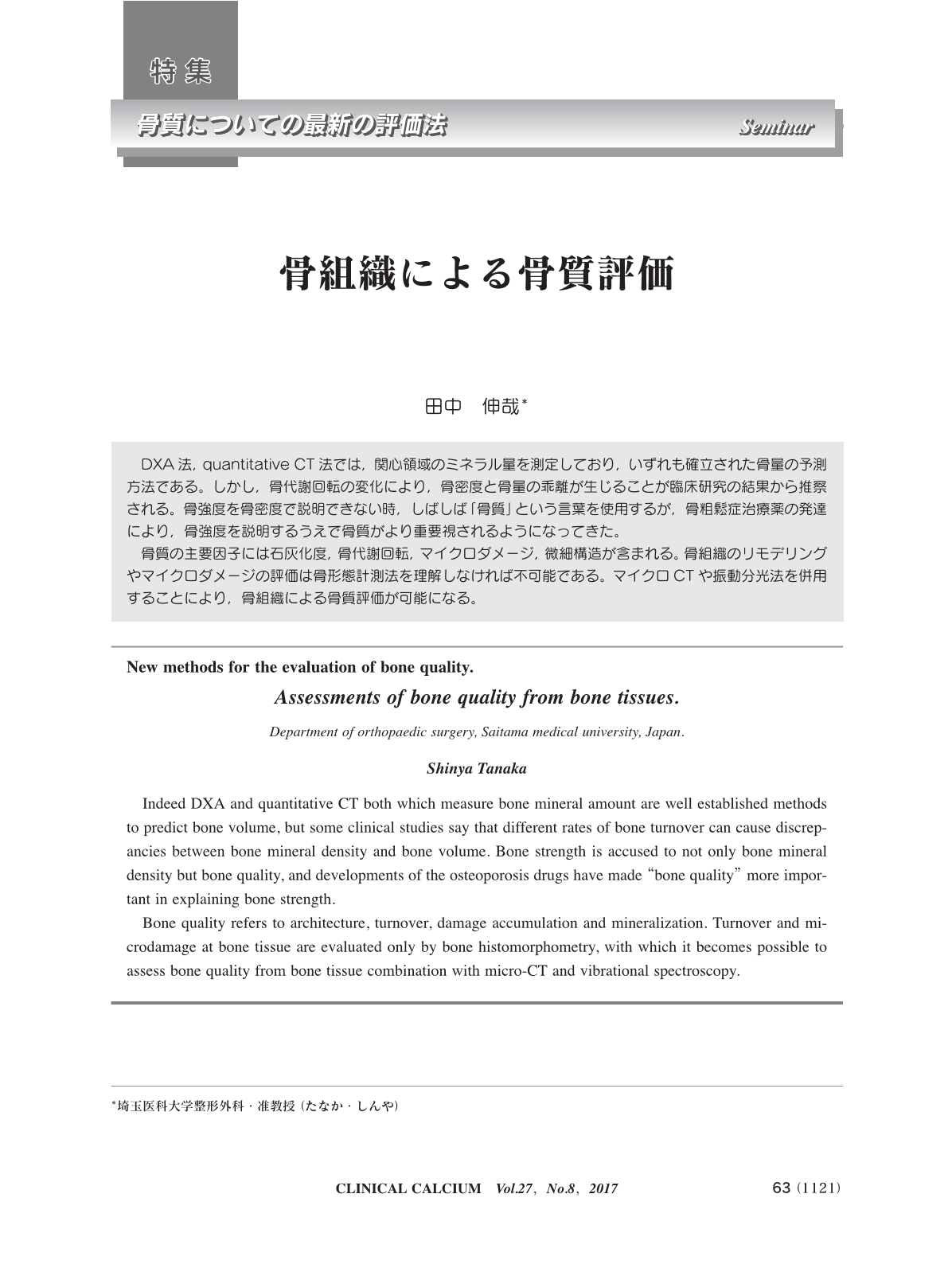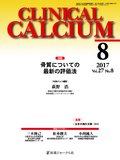Japanese
English
- 有料閲覧
- Abstract 文献概要
- 1ページ目 Look Inside
- 参考文献 Reference
DXA法,quantitative CT法では,関心領域のミネラル量を測定しており,いずれも確立された骨量の予測方法である。しかし,骨代謝回転の変化により,骨密度と骨量の乖離が生じることが臨床研究の結果から推察される。骨強度を骨密度で説明できない時,しばしば「骨質」という言葉を使用するが,骨粗鬆症治療薬の発達により,骨強度を説明するうえで骨質がより重要視されるようになってきた。 骨質の主要因子には石灰化度,骨代謝回転,マイクロダメージ,微細構造が含まれる。骨組織のリモデリングやマイクロダメージの評価は骨形態計測法を理解しなければ不可能である。マイクロCTや振動分光法を併用することにより,骨組織による骨質評価が可能になる。
Indeed DXA and quantitative CT both which measure bone mineral amount are well established methods to predict bone volume, but some clinical studies say that different rates of bone turnover can cause discrepancies between bone mineral density and bone volume. Bone strength is accused to not only bone mineral density but bone quality, and developments of the osteoporosis drugs have made “bone quality” more important in explaining bone strength. Bone quality refers to architecture, turnover, damage accumulation and mineralization. Turnover and microdamage at bone tissue are evaluated only by bone histomorphometry, with which it becomes possible to assess bone quality from bone tissue combination with micro-CT and vibrational spectroscopy.



